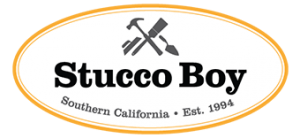Top Stucco Contractors in LA
Choosing the best stucco contractor is paramount when it comes to enhancing the exterior or interior of your property. Whether you’re embarking on a new construction project or renovating an existing space, the quality of craftsmanship can make all the difference. That’s why we’ve curated a list of the finest stucco contractors in LA to ensure your project exceeds expectations.
Why Stucco?
Before we delve into the top contractors, let’s take a moment to explore why stucco continues to be a preferred choice for both residential and commercial properties. Stucco offers unparalleled durability, weather resistance, and fire retardancy, making it an ideal option for California’s diverse climate. Additionally, its versatility allows for endless design possibilities, from traditional textures to modern finishes.
Best Stucco Contractors in LA
- Stucco Boy
With a stellar reputation for excellence, Stucco Boy tops our list of the best stucco contractors in Los Angeles. Specializing in both residential and commercial projects, their team of skilled artisans combines traditional techniques with innovative approaches to deliver superior results. From meticulous surface preparation to flawless application, #Stucco Boy takes pride in every detail of their work.
- Precision Stucco Los Angeles
Renowned for their precision craftsmanship and commitment to customer satisfaction, Precision Stucco Los Angeles is a trusted name in the industry. Whether you’re seeking a classic Santa Barbara finish or a contemporary smooth coat, their experienced craftsmen possess the expertise to bring your vision to life. With an emphasis on quality materials and attention to detail, Precision Stucco Los Angeles consistently exceeds expectations.
- L.F. PLASTERING, INC.
Boasting decades of experience and a portfolio of stunning projects, L.F. PLASTERING, INC. stands out as one of the premier stucco contractors in LA. Their team of skilled artisans utilizes time-tested techniques and state-of-the-art materials to create durable, beautiful surfaces that stand the test of time. From intricate architectural details to expansive commercial facades, L.F. PLASTERING, INC. delivers excellence with every project.
Factors to Consider When Choosing a Stucco Contractor
- Experience and Expertise: Look for contractors with a proven track record of success and a portfolio of satisfied clients.
- Quality of Materials: Ensure that the contractor uses high-quality stucco materials that are designed to withstand California’s climate.
- Attention to Detail: Choose a contractor who pays attention to every detail, from surface preparation to finishing touches.
- Customer Reviews: Take the time to read reviews and testimonials from previous clients to gauge the contractor’s reputation and reliability.
Conclusion
When it comes to enhancing the beauty and durability of your property, choosing the right stucco contractor is essential. Whether you’re in the market for a residential renovation or a commercial construction project, the contractors featured in this guide have the expertise, experience, and dedication to bring your vision to life.
